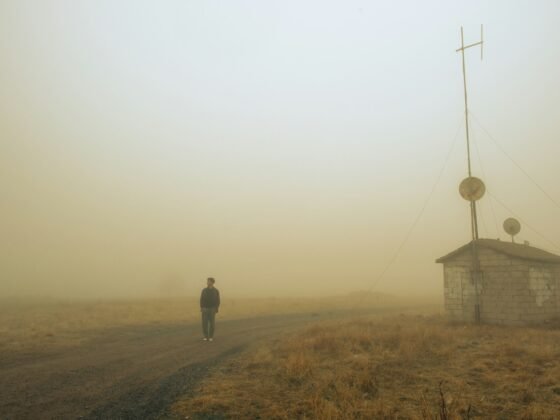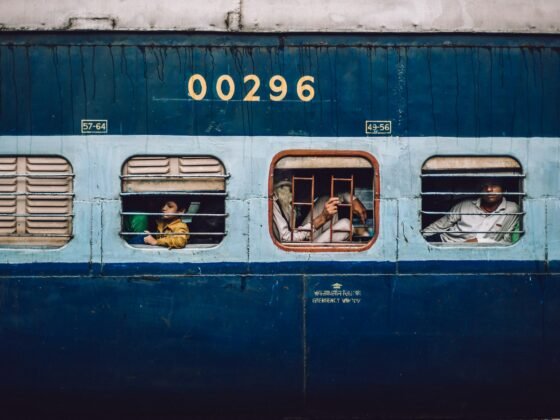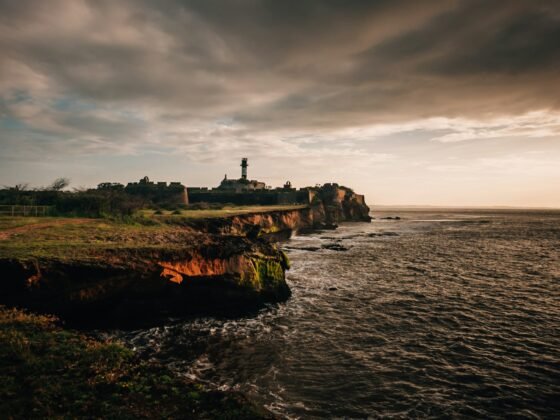by Shivani Trivedi
PureTravel Writing Competition 2024
“C’mon mumma, walk faster.” I said as my mom took her sweet time to walk towards the first tourist spot of Andaman and Nicobar Islands. We already had been here for a day and the touristy curiosity to cover more places was kicking in hard.
The serenity of the island waters was giving a very tough competition to my claims of being a mountain person. I picked up pace as I walked towards the place with the huge gate. The place that is always referred to as a Magnum opus of dark times. The place we’ve heard thousand stories about. The place that continues to haunt us in school textbooks and in history. The Cellular Jail of Andaman. Or else as we remembered, “Kaala Paani (Trans: Black water) Punishment.”
Just The thought of having a place that reeks of death in the midst of the lush green trees, calm blue water and serene breeze is funny. But that doesn’t mean it’s not true. I wondered how many freedom fighters walked inside these brick walls, knowing that they’ll never come out as I bought our tickets to go inside.
The place was jam packed with tourists from all over the world. Although the little gate in the front did not do justice to the enormous building blocks on the other side of the wall. Originally constructed with seven cell wings spread around one big tower in the middle like an octopus, is only left with two frail wings now. I don’t think frail would be the right word to use but what else do you call a set of wing with single cells, facing the picturesque garden in the middle, where the oil grinding and other horrors, ultimately leading to getting executed took place, horrifically empty, rusted and turned into a selfie spot?
I looked around at people doing regular touristy things. Clicking pictures, making reels. The middle garden is stuffed with statues depicting the punishment given to the freedom fighters of India, which includes some very lurid figures of men getting punished while peeling coconuts, making ropes and grinding oils like some animals. The sight made me nauseous.
The only working wing has three stories like all the other six did. Out of all the 696, 15 by 8 feet cells that were present here someday, no two cells faced each other. There was no way of communication or human interaction left for the so-called political prisoners that were brought here. I heard a nearby guide explain how three of the wings were destroyed by the Japanese troopers in 1942, during the Second World War.
I walked towards the little shed-like structure in the corner of the garden. It was the shed where they hung the prisoner. I didn’t feel any urge to go inside and look at it. Although what astonished me, were the people clicking pictures with a nook around their necks. Were they not feeling the congested feeling that I was feeling? I could no longer see this place as a national monument as I sat on one of the benches in the garden next to my mom. The place was still filled with thousand silent screams and cries that had once kept these walls alive. I wondered if our generation is capable enough to sacrifice their youths and most importantly, their smartphones for their country and accept the dark solitude this place offered nearly a century ago?!
“Do you mind if I skip touring the wings?” Mom asked me sheepishly.
I understood, my mother might be feeling the same strangeness of the atmosphere. Honestly, I didn’t want to go up the floors of the buildings too, but If my people can survive life here, I can surely survive a short visit.
As mom relaxed on the bench, evening sun was settling down. Clouds shone so bright in the clear blue sky that everything just sparkled. Everything was so beautifully tragic here. I wondered, if the brave martyrs of this jail know what a joyous life this island offers now; that their sacrifice hasn’t been wasted. I wondered if the boy posing to his father for a picture, knows that the smile he has, belongs to the soldiers who never got to see their children again.
With each step, I felt guilt, of how hard life was for the people here, and how easy it is for me. I saw people going inside some of the empty cells and holding the bars while clicking photos. Personally, I found the display a little insensitive and thoughtless but again, I could just be one of those hormonal emphatic over thinkers of a woman. Whatever it was, there was something very sad that surrounded the place. Or maybe it was just the place. Or the century old tree in the front yard that was just left with a heavy trunk now, that might have witnessed the excruciating fight that went on here. Against people, against time and against life.
I saw the cell, where everyone was standing in a small line to get their pictures clicked, with a framed photograph of Veer Savarkar; one of the greatest freedom fighters of the country. With no basic human needs or facilities provided, I wondered how someone could survive for 11 years here. Every inch of every brick inside these cells had a story. Mostly a devastating one. Although I don’t think any of those people would blink an eye if they had to do it again.
I feel the most dangerous place a person can be is inside his head, alone with the thoughts. And it would be a miserable place to be with death dancing around you constantly. I felt the walls of the cell closing in, and the atmosphere turning heavier as I took a few steps back. I had no desire to step inside that cell. I felt the sweat rolling down my temple as I walked hurriedly towards the stairs. Inching away from the sight that was making my heart pound loudly. I stopped at the staircase and took a long breath when I heard someone talk about a terrace on the floor above. In dire need of some fresh air, I walked up.
As soon as I stepped out, my eyes fell on an open runway, kind of a terrace. I walked, taking in the calm waters accompanied by the luscious green tree covers. There was a reason this place was called “Kaala Paani (Black waters)”. Water was everything that surrounded the jail. Even if the prisoners escaped somehow, (which some of them actually did), where would they go?! The only way out of the islands was water in those times. That was the reason this paradise was chosen to build such a bizarre construction. Zero contact with the outer world. Zero chance of escaping, let alone plotting against the government. Zero chance of survival. And yet people paid that prize happily for the freedom.
I felt a lot better when the cool breeze splashed on my face. The denseness of the surroundings decreased. I came to the edge of the terrace to take in the view fully, when my eyes fell on my mother, chatting with some fellow tourists on the bench. An involuntary smile crept up on my lips when I saw her fumbling her bag for candy to give it to the little girl that sat next to her. Mothers!
And that’s when I wondered again, what freedom actually meant. The ruins of this place was the live example of how hard those people had worked to gain what is one of the basic human rights. Freedom. Freedom of living. Freedom of choosing. Freedom of just existing on your own terms.
Standing on the roof of that building, looking at my mother, I realized how I always had plenty of it. In my 23 years of life, my single mother had always given me all the privileges to make my own life choices. How easy it would’ve been for her to choose the path for me, to make sure I always stayed the course. Instead she gave me the freedom to make mistakes. To fail. To fall. And to get back up again. And she made sure she stayed there with her arms wide open to catch me had I spin down from the sky.
Would I be able to stand here like this, thinking about all these had those martyrs not sacrificed for the greater good?! Would I be standing here, tall and proud, had my mother not been the greatest warrior I’ve ever seen? Probably not.
I threw one last glance at the gruesome beauty this place entailed, the horrors that happened in the middle of one of the most serene places I’ve ever seen. If there was one lesson that I was taking home from this experience was this, “Never take the freedom you’re experiencing, the breath you’re inhaling for granted, for them, many have fought till their last ones.”
Photo by Abhijit Chirde on Unsplash











